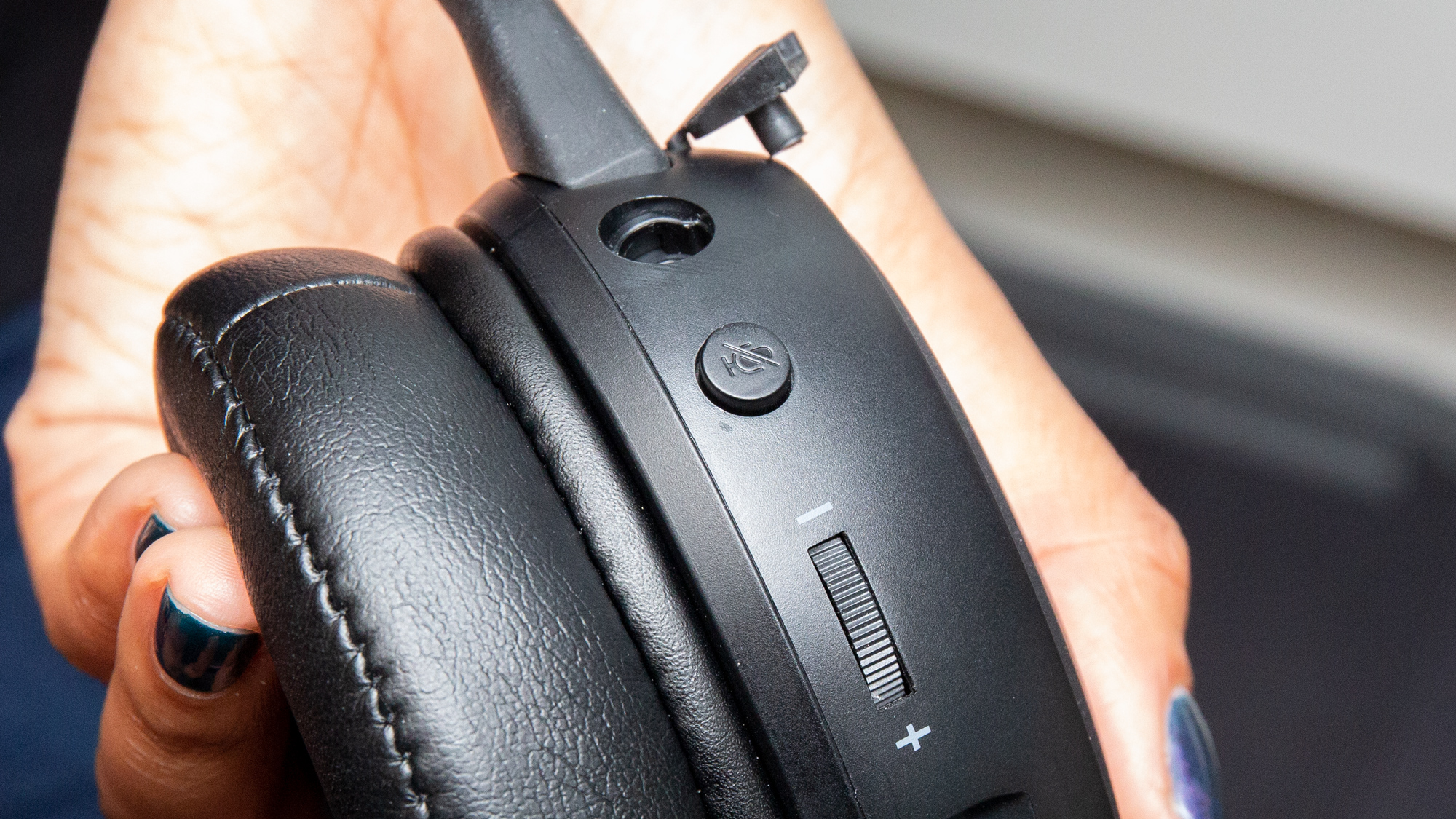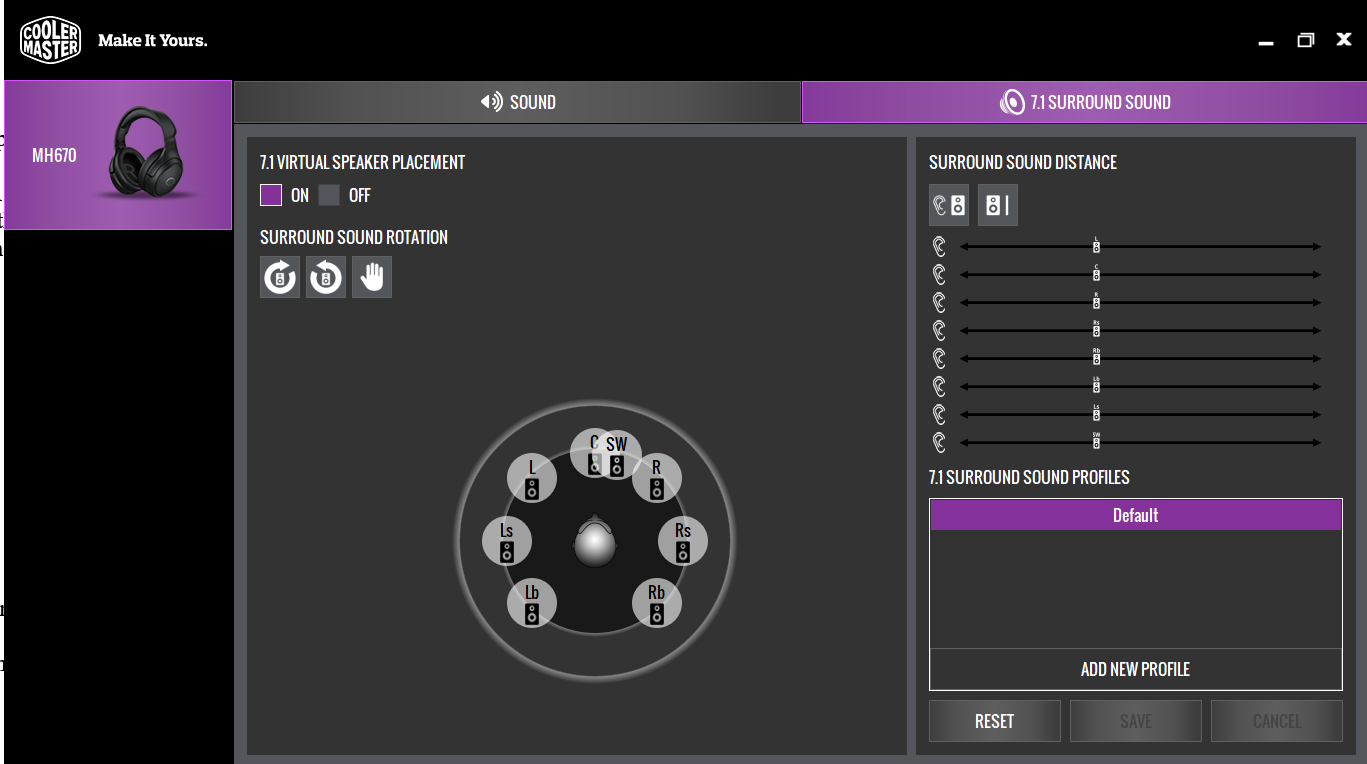Tom's Hardware Verdict
The MH670 is a lightweight, well-built looker that won’t be out of place at home or the office. While it could stand to be a tad louder, the MH670’s audio is extremely crisp and clean, and it’s mic is a step up from many similarly priced cans. At $119.99, the MH670 is very competitively priced.
Pros
- +
Well-balanced, clear audio
- +
Lightweight and portable
- +
Excellent battery life and clean design
Cons
- -
Quieter than expected
- -
Earcups are a little tight
- -
3.5mm plug has trouble fitting into a phone with a case
Why you can trust Tom's Hardware
Cooler Master’s MH670 looks like one of the best gaming headset options if you’re looking for something you can take everywhere. With wireless connectivity via a USB Type-A dongle or USB Type-C adapter, and removable 3.5mm cable, it can work with a PC, as well as XBox One, PlayStation 4, Nintendo Switch or even a smartphone.
The cans offer excellent build quality, attractive design, great battery life and superior sound quality with a few small caveats. While the audio is crisp and clear, it could use a bit more power. Similar headsets from competitors such as HyperX are noticeably louder. And while it’s portability and versatility make it seem like a good candidate for on-the-go use, you may struggle to plug it into your smartphone’s headphone jack.
Cooler Master MH670 Specifications
| Driver Type | 50mm neodymium |
|---|---|
| Impedance | 32 Ohms |
| Frequency Response | Wired: 15-25,000 Hz; Wireless: 20-20,000 Hz |
| Design Style | Closed-back |
| Microphone Type | Omnidirectional, detachable noise-cancelling |
| Connectivity | Wireless (USB 2.0 dongle with USB to USB-C adapter) or 3.5mm; MicroUSB to USB charging cable |
| Weight | Without cable: 0.76 pounds (346.5g); With cable: 0.82 pounds (373g) |
| Cord Length | Optional 3.5mm cable: 4.92 feet (1.5m); Charging cable: 3.93 feet (1.2m) |
| Lighting | None |
| Software | Cooler Master MasterPlus |
Design and Comfort
The MH670 is billed as a gaming headset, but thanks to its understated design it looks much more like a pair of professional studio monitors than an eSports tool. The headset foregoes the typical, angular appearance of its brethren in favor of a clean, elegant design that’ll be taken seriously outside of DeathMatch. The stealthy, matte-black finish complements the MH670’s minimalist design well. Even the hexagonal Cooler Master logo on the outside of the earcups is presented in a way that lets the headset’s look speak for itself.




The foam-cushioned headband also uses steel, plastic and PU leather and sits neatly on the head. And adjustments are simple via a tried-and-true push-pull earcup mechanism. For the most part, the MH670 felt comfortable and snug, but there was some noticeable shifting that occurred if I was particularly active. I never felt like the MH670 would slip off of my head, but this wobble proved distracting while gaming sometimes. Thankfully, some quick earcup adjustments minimized these modest stability issues.
The MH670’s earcups offer good padding, PU leather and a solid grip, but were slightly too shallow and tight for my ears. This led to some mild discomfort over long periods of time, and I sometimes found myself taking the headset off to allow my ears to breathe. If your head and ears are on the larger side, this is certainly a concern but hardly a deal breaker.
Thankfully, the headset’s earcups swivel, making it comfortable to wear on the neck in between sessions.
Being a wireless headset, there are no inline controls attached to a wire here. Instead, the controls are on the outside of the headset earcups, with the volume wheel and mic button located on the left. The headset’s power button and toggle for 7.1 virtual surround sound are on the right earcup.
Get Tom's Hardware's best news and in-depth reviews, straight to your inbox.

The headset can connect to your PC, console or mobile phone with the included 2.4 GHz USB 2.0 (Type-A) wireless dongle (complete with a USB-C adapter) or the included 3.5mm cable. In most cases, either method worked well, with the exception of using the 3.5mm cable to connect to a smartphone with a case on it. I could not fit the 3.5mm connector into a Samsung Galaxy S9+ or S10+ with a case attached. The end of the 3.5mm cable that connects to an external device has a slightly thicker-than-average, hexagonal plug base that simply doesn’t fit into a 3.5mm headphone jack on a phone if it’s in a bulkier protective case. Slimmer cases may not present this challenge. If your phone has a USB-C connection, you can pair the headset using its wireless dongle. If not, you’ll meet an unfortunate tradeoff of making an expensive phone more breakable for the sake of using the MH670.
Audio Performance
The MH670 is no slouch in the audio department, offering crisp highs, booming low end and clean mid frequency response.
The virtual 7.1 surround sound offered excellent simulated directional audio, making FPS gaming in titles, like Doom an immersive experience. While the bass takes center stage in the MH670s EQ curve, bass response was free of distortion and sounded clean. Music and movies likewise sounded clean and punchy. GZA’s “Liquid Swords” came through the MH670 with a satisfying snap to the bass lines, and pitched battles in Lord of the Rings sounded appropriately thunderous.
The optional Cooler Master MasterPlus software has additional audio presets for music and movies, but the headset defaults to the Gaming preset, which is the most balanced of the three. The Music preset is too trebly and thin, and the Movie preset is far too bassy.
Also, the MH670 is somewhat lacking in the volume department. Regardless of application, I never felt like I got quite enough oomph out of the MH670’s drivers. This was true of both wireless and wired modes. While this may be perfectly acceptable for gaming and listening to music at home, it leaves a little to be desired for blocking out the rest of the world with music on the go, something you might very well want to do with the headset’s ability to connect to smartphones with a 3.5mm jack or USB-C port. The MH670 barely managed to block out intrusively loud noise when the times I took it for test spins on public transit.
When using the MH670 as a wireless headset, there was no discernible audio lag, but I did notice a slight trade-off in frequency range. As a wired headset, the MH670 offers an additional 5K on either side of the frequency spectrum, making wired the preferred mode for audiophiles.
The MH670’s mic is well-balanced, lacking the tinny output often present in gaming headset mics. Bass output was full without being overpowering, and it was nice to hear my voice accurately reproduced. It also did a good job of filtering voice from ambient sound. The mic is not without its flaws, however. It picked up background sounds, such as keyboard chatter and fan noise. The mic’s biggest drawback is the lack of a pop filter. Heavy consonants and breathing resulted in noticeable booms and pops. Despite these flaws, the MH670s mic is still a cut above many other gaming headset mics when it comes to an accurate representation of the voice.
Features and Software
You can use the MH670 without downloading Cooler Master’s MasterPlus software, but installation is painless and it offers a simple and streamlined user interface (UI) for making simple tweaks to the headset’s audio. The UI consists of two tabs: Sound and 7.1.
The Sound tab has three audio presets: Pop Music (slightly mid-scooped EQ curve), Movie (heavily boosted bass ) and Gaming (Bass+), which is, oddly enough, the most balanced EQ setting of the three. The EQ on all three presets are adjustable, and you can create and save EQ presets.
The 7.1 tab offers surround sound rotation, as well as distance adjustment using a set of eight sliders for your tweaking pleasure. You can save several custom profiles and easily switch between them.
Kudos are certainly well deserved for putting together no-nonsense software that anyone can configure with minimal effort. The Movie preset simply doesn’t sound good in any application and should be avoided due to its over-reliance on booming bass at the expense of overall audio clarity. The Gaming preset is the default setting for the headset and is easily the best sounding without tweaks, so if you don’t feel the need to fine-tune, you’ll be fine without Cooler Master’s software.
Battery Life
This is where the MH670 really excels. Over the course of my testing, I was able to clock roughly 18 hours of consistent use on a full charge. Many gaming headsets on the market fall well short of that figure, making a great case for Cooler Master’s latest effort.
As an added bonus, the charging cable is of more than sufficient length (3.93 feet/1.2m) to enable use of the headset while charging. My sample took about three hours to reach full charge; however, making the lack of fast charging via USB-C a notable omission.
Bottom Line

The Cooler Master MH670 combines an attractive, understated design, high-end build quality, solid audio and exceptional battery life into a compelling value proposition for $119.99. There are some small drawbacks, like a 3.5mm plug that can’t seem to play nicely with some mobile phone cases, and lower than expected volume. But here are few other headsets in the MH670’s price range that get so many things right.
It works as designed out of the box, making its software optional instead of mandatory. It has well-balanced audio performance and can go an extremely long time between charges for the average user.
The fact that the MH670 eschews RGB lighting and aggressive and angular styling is also a huge plus for people who plan on using their headset for more than just gaming. Couple this with its versatile connectivity options and lightweight portability and the MH670 is very easy to recommend.
MORE: Best Gaming Headsets
MORE: Gaming Headset Reviews

Nate Rand is a freelance reviewer for Tom's Hardware US, covering gaming headsets, keyboards, mice, and microphones.
-
hang-the-9 The 751 models were based on the Takstar pro 82, are these also based on another design?Reply -
junneh No, they arent. CM own design but probably working with Takstar again in development.Reply
Have the headset and its quite nice. Sound quality and volume is on par with my Cloud flight. Feels better build and can use the mic when wired also. One downside is that the pads are not memory foam but ill be using hm5 anyway.


